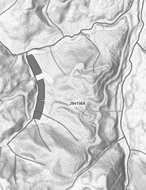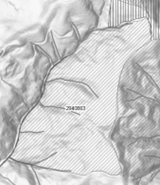WSR 24-06-043
PREPROPOSAL STATEMENT OF INQUIRY
FOREST PRACTICES BOARD
[Filed February 29, 2024, 5:49 p.m.]
Subject of Possible Rule Making: Experimental research treatments.
Statutes Authorizing the Agency to Adopt Rules on this Subject: The forest practices board's (FPB) authority to adopt forest practices rules is granted under RCW
76.09.040, [76.09].050, and [76.09].370. The pilot project process is authorized by RCW
34.05.313.
Reasons Why Rules on this Subject may be Needed and What They Might Accomplish: This rule is necessary to authorize the implementation of experimental harvest treatments on three sites in western Washington in excess of what is currently permitted in the forest practice rules (WAC 222-30-021) as part of the riparian characteristics and shade response (RCS) experimental research study. The purpose of this study is to evaluate how stream shade responds to a range of riparian harvest treatments of varying intensity within multiple environments common to commercial forestlands covered under the Forest Practices Habitat Conservation Plan (FPHCP 2005). This pilot rule pertains to three sites in western Washington that are expected be harvested between May and July 2024. Two forest practices applications (FPA) are preferred sites for the RCS study (Fig. 1), and one FPA is a backup site (Fig. 2). Final site selection will be addressed when the landowner's harvest schedule becomes finalized. Regardless of the sites that are used, the estimated total length of impacted stream is 0.6 km for two sites that will be harvested under this pilot rule in summer 2024.
Washington's forest practices regulations include riparian prescriptions that incorporate stream-adjacent no-harvest buffers of varying widths. The rules include no-harvest riparian buffers that can be applied alone or in combination with some harvest (thinning) in the adjacent riparian management zone (RMZ). Field research is particularly limited when examining the combined effects of no-harvest zones and different thinning intensities on stream shade within RMZs. This study will address a key question about how shade could be affected by using forest thinning as a riparian management tool (e.g., to promote old growth forest characteristics).
Sites under consideration for this pilot rule are owned by Weyerhaeuser Company. All three sites are currently marked for desired future condition (DFC) harvest in the inner zone, with a 50 foot no-cut core zone. Site visits were conducted at the two preferred sites in September 2023 to verify that sites meet stocking requirements, and to verify that three plots can be sited along the stream. This pilot rule will allow harvest of additional timber within the forest practices rule RMZs under three scenarios as detailed in the RCS study design. The most intensive treatment will include an RMZ clearcut harvest to a riparian buffer width of 25' (Fig. 3). The mid-level treatment will include heavy thin (Curtis's relative density of 20) to 25' of the stream's edge. The least intensive treatment will include a light thin (Curtis's relative density of 40) to 25'. Within each site, the three treatments will randomly be assigned to three plots. This pilot rule only pertains to the locations where plots overlap the RMZ. Outside of the plots, existing rules in WAC 222-30-021 would still apply, such as the RMZ widths to be applied for Site Class II (RMZ width of 170ft) and III streams (RMZ width of 140 feet).
Thinning will be "from below," meaning that the largest trees in the plot will be painted as leave trees first, followed by the next largest trees, and so on, until the target Curtis's relative density is achieved. Curtis's relative density is an integrated measure of stand basal area and average tree size (quadratic mean diameter). Curtis's relative density increases with an increase in basal area, holding constant quadratic mean diameter, and relative density increases with a decrease in quadratic mean diameter with constant basal area. The use of Curtis's relative density, as opposed to trees per acre or total basal area, provides an understanding of tree competition across a range of forest types in Washington where multiple tree species will be encountered.
Other Federal and State Agencies that Regulate this Subject and the Process Coordinating the Rule with These Agencies: FPB is the oversight agency with the authority to approve this pilot activity. The pilot rule is being requested as part of the formal FPB adaptive management program, which includes representatives from state agencies, including the departments of fish and wildlife, ecology, and natural resources; federal agencies, including National Marine Fisheries Service, United States Fish and Wildlife Service, and the Environmental Protection Agency; forest landowners; the environmental community; county governments; and tribal governments.
Process for Developing New Rule: Pilot rule making.
Interested parties can participate in the decision to adopt the new rule and formulation of the proposed rule before publication by contacting Patricia Anderson, Forest Practices Board Rules Coordinator, Department of Natural Resources, Forest Practices Division, 1111 Washington Street East, P.O. Box 47012, Olympia, WA 98504-7012, phone 360-890-0277, fax 360-902-1428, email forest.practicesboard@dnr.wa.gov.
Additional comments: FPB has approved inclusion of the RCS study in the master project schedule. The RCS study has a peer-reviewed study design and is supported by the FPB adaptive management program. An initial field trial has been conducted, and full study implementation is underway. The timber fish and wildlife policy committee and the cooperative monitoring, evaluation, and research (CMER) committee are supportive of this study. Previously, FPB approved pilot rule making for the RCS study (February 2023). However, none of the 40 sites that were previously identified were selected for implementation, so we have submitted a new preproposal statement of inquiry that addresses the two sites we are planning to implement the study on in summer 2024 (Fig. 1), and an additional backup site (Fig. 2).
Fig. 1 maps of the two preferred sites, FPA 2940026 (left) and FPA 2941569 (right), which we are applying for permission to implement the RCS study on between May and August 2024. FPAs were screened using site selection criteria outlined in the approved study design, along with ArcGIS for potential site suitability based on stream orientation and local topography. Plot locations shown here are approximate locations and will change slightly during the plot layout phase.
Fig. 2 map of the backup site, FPA 2940863. This backup site was provided by the landowner in January 2024 and has not yet been evaluated in the field.
Fig. 3 experimental design for the RCS study. A study site consists of three plots with a revised 25-foot no-harvest core zone, measured from the stream edge (outer edge of bankfull width), which deviates from WAC 222-30-021 (Western WA; 50 foot core zone). Riparian forest thinning from 100 feet to 25 feet from the stream edge will be performed to a relative density of 0, 20, and 40, for each of the plots, irrespective of basal area requirements detailed in the WAC.
February 14, 2024
Alexandra K. Smith
Chair





